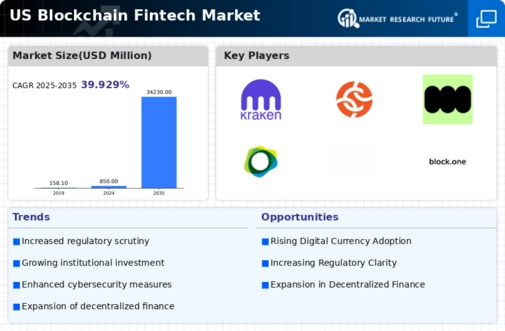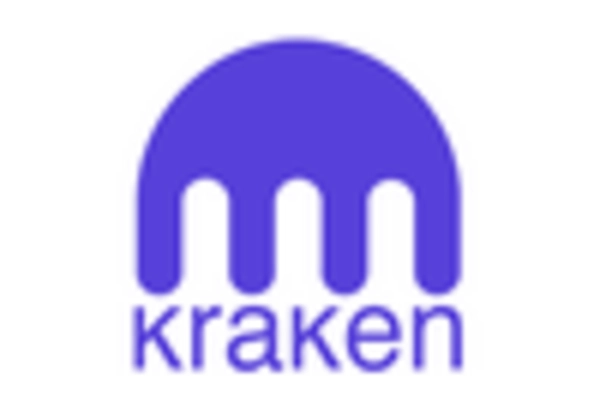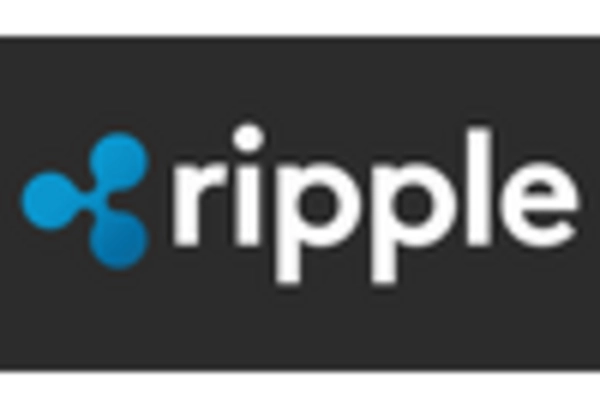The blockchain fintech market is currently characterized by a dynamic competitive landscape, driven by rapid technological advancements and evolving consumer preferences. Major players such as Coinbase (US), Binance (MT), and Ripple (US) are at the forefront, each adopting distinct strategies to enhance their market positioning. Coinbase (US) focuses on regulatory compliance and user-friendly interfaces, aiming to attract a broader customer base. In contrast, Binance (MT) emphasizes global expansion and a diverse range of services, including trading, staking, and lending. Ripple (US) is strategically positioned to facilitate cross-border payments, leveraging its blockchain technology to streamline transactions, which collectively shapes a competitive environment that is both innovative and responsive to market demands.
The business tactics employed by these companies reflect a moderately fragmented market structure, where competition is fierce yet collaborative. Localizing services to meet regional regulatory requirements and optimizing supply chains for efficiency are common strategies. The influence of key players is substantial, as they not only drive innovation but also set industry standards that smaller firms often follow. This competitive structure fosters an environment where agility and adaptability are paramount for success.
In October 2025, Coinbase (US) announced a partnership with a major financial institution to enhance its custodial services, which is a significant move aimed at attracting institutional investors. This partnership is likely to bolster Coinbase's credibility and expand its service offerings, positioning it as a leader in the institutional segment of the market. Such strategic alliances may enhance trust and security, which are critical factors for institutional clients.
In September 2025, Binance (MT) launched a new decentralized finance (DeFi) platform, aiming to capture the growing interest in DeFi solutions. This initiative not only diversifies Binance's product offerings but also aligns with the increasing demand for decentralized financial services. The launch is expected to attract a new user demographic, further solidifying Binance's market presence and enhancing its competitive edge.
In August 2025, Ripple (US) secured a partnership with a prominent bank to facilitate real-time cross-border transactions. This collaboration underscores Ripple's commitment to revolutionizing payment systems and highlights the strategic importance of partnerships in enhancing operational capabilities. By integrating its technology with established financial institutions, Ripple is likely to gain a competitive advantage in the remittance market.
As of November 2025, the competitive trends in the blockchain fintech market are increasingly defined by digitalization, sustainability, and the integration of artificial intelligence (AI). Strategic alliances are becoming more prevalent, as companies recognize the value of collaboration in navigating regulatory landscapes and enhancing technological capabilities. Looking ahead, competitive differentiation is expected to evolve, with a shift from price-based competition to a focus on innovation, technology, and supply chain reliability. This transition may redefine market dynamics, compelling companies to invest in cutting-edge solutions that meet the demands of a rapidly changing financial ecosystem.

















Leave a Comment